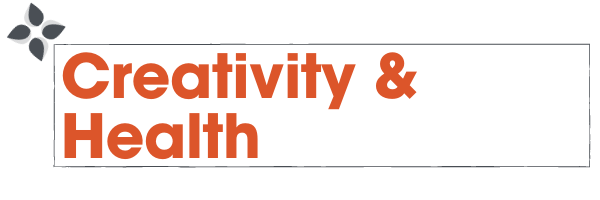What does it mean to be creative? Most people think of creativity as Fine Arts, such as writing novels, painting, or composing original music. In reality, creativity is so much more. There’s an incredible range of what can be called “creative.” Do you write code? Develop advertising campaigns? Come up with unique recipes? Garden? Sew or knit? Decorate tablescapes? Craft playlists? Do crossword puzzles or fill in adult coloring books? Doodle during meetings? Then you’re creative!
Mood Boost
Creativity has a host of positive benefits for health. You may feel that your creative pursuits bring you joy and connect you to others. These are among the many benefits associated with creativity that are backed by science! A 2016 study in The Journal of Positive Psychology reported that “spending time on creative goals during a day is associated with increased positive moods, such as joy, happiness, and optimism on that day.” Increased feelings of joy or optimism expand our perspective so that we notice more possibilities in our lives.
In addition, when we focus on something that is fun and/or challenging, we make new neuropathways, increasing connectivity in the brain. Increased connectivity, especially in the left prefrontal cortex of the brain, makes us more emotionally resilient. Resilience determines how we react to adversity, and it’s a big factor in mental health.
Flow State
Often when people are creating something, whether it’s a software program, graffiti, or a quilt, they get lost in the activity. The act of creating requires focus and concentration. While in the “flow state” many people say that they lose track of time or feel absorbed in their activity. It’s more accurate to say that the creative person is present in time while creating. While creating, we’re focused on what we’re doing right now, rather than looking forward or back. Creative pursuits offer a refuge from the task-switching we’re usually doing throughout the day, allowing the brain to channel energy and attention in a singular direction.
Scientifically, the state of creative flow is caused by changes in brain function. Brainwaves slow down, and the prefrontal cortex temporarily deactivates, making us less critical and more courageous. Lastly, during a flow state, our brain releases “an enormous cascade of neurochemistry,” including large quantities of endorphins, serotonin, and dopamine. These are pleasure- and satisfaction-inducing chemicals that affect well-being. The way the brain acts during creative activities is similar to the experience during meditation, mindfulness, and yoga, helping you find peace, calm, and happiness.
Increased Immunity
Studies have shown people who write about their experiences daily actually have stronger immune system function. Although experts are still unsure how it works, writing increases the number of CD4+ lymphocyte (white blood cells that fight infection). Music therapy has immune system-boosting effects as well. Music affects our brains in complex ways, stimulating the limbic system and moderating our response to stressful stimuli. Listening to music “may help to restore effective functioning in the immune system partly via the actions of the amygdala and hypothalamus.” These brain regions are responsible mood regulation and hormonal processes, as well as in the body’s inflammatory response.
So, go ahead and doodle during that lecture! Tend to your garden! Embrace the living room dance party! Sing off-key in the shower! Your body and mind will thank you.



